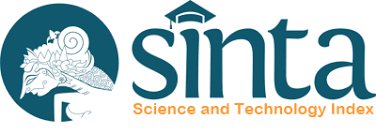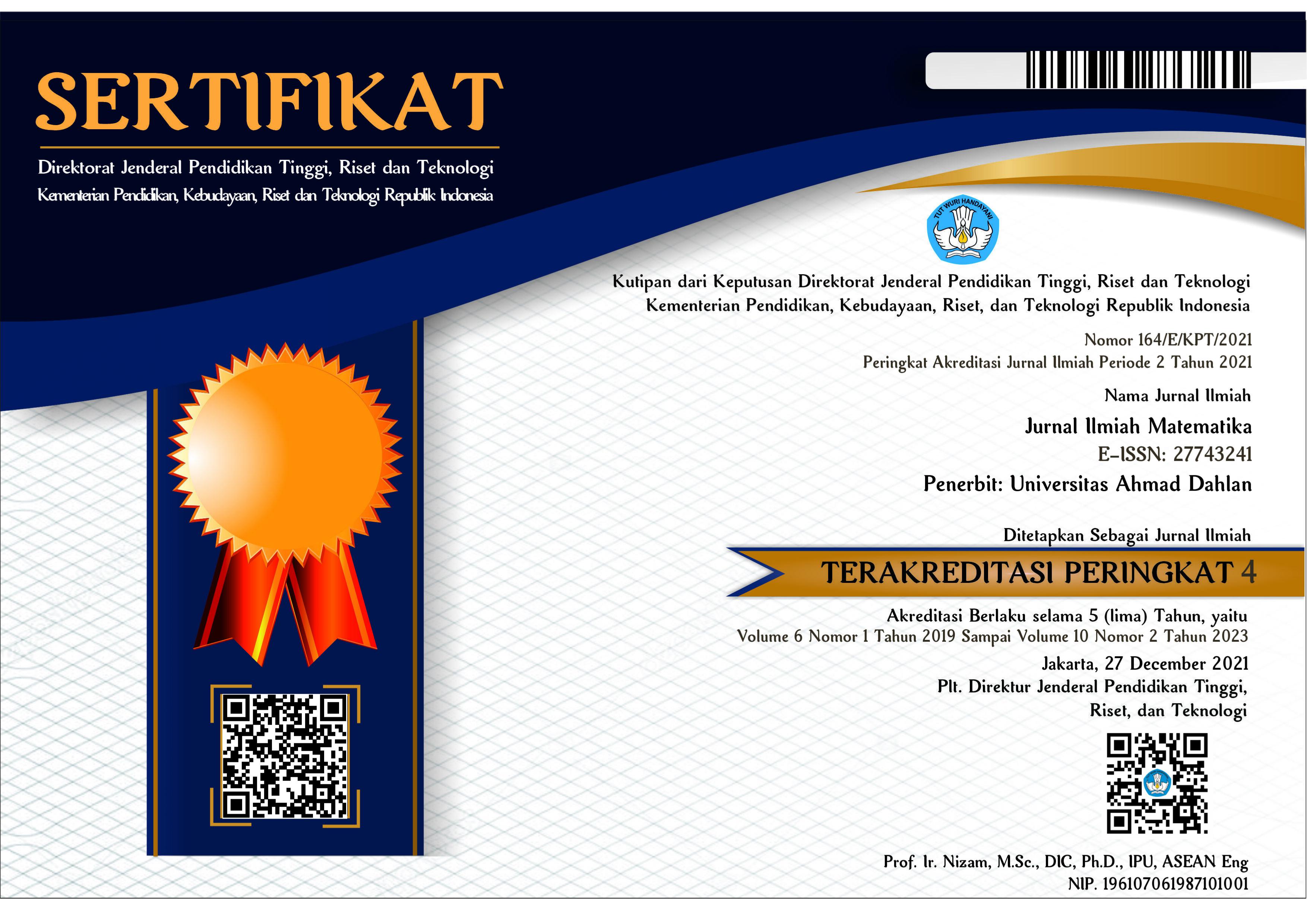Perbandingan 5 Jarak K-Nearest Neighbor pada Analisis Sentimen
DOI:
https://doi.org/10.26555/konvergensi.v0i0.23170Abstract
K-Nearest Neighbor (KNN) merupakan algoritma yang biasa digunakan untuk klasifikasi. Penelitian ini menggunakan ulasan aplikasi Maxim di Google Play Store. Pengguna yang sudah mengunduh aplikasi Maxim berhak memberikan ulasan di Google Play Store guna berbagi informasi untuk pengguna lain. Implementasi K-Nearest Neighbor (KNN) terhadap Sentiment Analysis ulasan aplikasi Maxim dapat digunakan untuk menentukan kelas ulasan bernilai positif, neutral, atau negatif. Peneliti melakukan perbandingan 5 jarak yang berbeda untuk metode KNN yaitu jarak Euclidean, Manhattan, Minkowski, Chebyshev dan Canberra. Pengujian yang telah dilakukan memberikan hasil akurasi pada klasifikasi KNN dengan jarak yang berbeda, memberikan hasil akurasi yang berbeda-beda, yaitu jarak Euclidean 84 persen, jarak Manhattan 79 persen, jarak Minkowski 84 persen, jarak Chebyshev 7 persen dan jarak Canberra =44 persen.References
M. N. Muttaqin and I. Kharisudin, “UNNES Journal of Mathematics,†UNNES J. Math., vol. 1, no. 2252, pp. 125–130, 2015.
P. B. Mahargiono and K. E. Cahyono, “Kontroversi Transportasi Online Sebagai Dasar Pembenahan Fasiltas Layanan Penumpang Bagi Pelaku Bisnis Transportasi Di Surabaya,†Pros. Semin. Nas. Multi Disiplin Ilmu, vol. 3, no. Sendi_U 3, pp. 663–668, 2017.
F. Al Rasyid, “Resahkan’ Kompetitor, Maxim Ternyata Bukan Perusahaan Ojek Online,†[Online]. Available: https://id.rbth.com/economics/81796-maxim-ojol-asalrusia-wyx.
A. Indriani, “Mengenal Ojol Maxim, Penantang Gojek-Grab,†DetikFinance, 2019.
N. Wayan and S. Saraswati, “Naïve bayes classifier dan support vector machines untuk sentiment analysis,†Semin. Nas. Sist. Inf. Indones., pp. 2–4, 2013.
B. Liu and L. Zhang, “A survey of opinion mining and sentiment analysis,†in Mining Text Data, 2012, pp. 415–463.
M. Mukaromah, “Penerapan Metode Fuzzy Sugeno Untuk Menentukan Jalur Terbaik Menuju Lokasi Wisata Di Surabaya,†J. Mat. Sains dan Teknol., vol. 20, no. 2, pp. 95–101, 2019, doi: 10.33830/jmst.v20i2.187.2019.
Z. Putri, Sugiyarto, and Salafudin, “Desimal : Jurnal Matematika,†Desimal J. Mat., vol. 4, no. 1, pp. 13–20, 2021, doi: 10.24042/djm.
Y. Zhang, M. Chen, and L. Liu, “A review on text mining,†Proc. IEEE Int. Conf. Softw. Eng. Serv. Sci. ICSESS, vol. 2015-November, pp. 681–685, 2015, doi: 10.1109/ICSESS.2015.7339149.
K. Nugraha and D. Sebastian, “Chatbot Layanan Akademik Menggunakan K-Nearest Neighbor,†J. Sains dan Inform., vol. 7, no. 1, pp. 11–19, 2021, [Online]. Available: https://dev.jsi.politala.ac.id/index.php/JSI/article/view/285.
H. . Putranoto, T. Rizaldi, W. K. Dewanto, and W. Pebrianto, “DESIGNING A PYTHON BASED TEXT PRE-PROCESSING APPLICATION FOR TEXT CLASSIFICATION,†pp. 187–194.
A. Jettakul, C. Thamjarat, K. Liaowongphuthorn, C. Udomcharoenchaikit, P. Vateekul, and P. Boonkwan, “A Comparative Study on Various Deep Learning Techniques for Thai NLP Lexical and Syntactic Tasks on Noisy Data,†Proceeding 2018 15th Int. Jt. Conf. Comput. Sci. Softw. Eng. JCSSE 2018, pp. 1–6, 2018, doi: 10.1109/JCSSE.2018.8457368.
D. J. Ladani and N. P. Desai, “Stopword Identification and Removal Techniques on TC and IR applications: A Survey,†2020 6th Int. Conf. Adv. Comput. Commun. Syst. ICACCS 2020, pp. 466–472, 2020, doi: 10.1109/ICACCS48705.2020.9074166.
H. M. Tahir, A. M. Said, N. H. Osman, N. H. Zakaria, P. N. A. M. Sabri, and N. Katuk, “Improving K-Means Clustering using discretization technique in Network Intrusion Detection System,†2016 3rd Int. Conf. Comput. Inf. Sci. ICCOINS 2016 - Proc., pp. 248–252, 2016, doi: 10.1109/ICCOINS.2016.7783222.
K. Teknomo, What is K-Nearest Neighbor Algoritm. 2006.
Kusrini and E. T. Lutfhi, Algoritma Data Maining. Yogyakarta, 2009.
C. Vercellis, Business Intelligent: Data Mining and Optimization for Decision Making. Southern Gate, Chichester, West Sussex: John Willey & Sons, Ltd, 2009.
R. Ndaumanu, “Analisis Prediksi Tingkat Pengunduran Diri Mahasiswa dengan Metode K-Nearest Neighbor,†Jatisi, vol. 1, no. 3, 2004.
Downloads
Published
Issue
Section
License
Authors who publish with this journal agree to the following terms:
1. Authors retain copyright and grant the journal right of first publication with the work simultaneously licensed under a Creative Commons Attribution License that allows others to share the work with an acknowledgment of the work's authorship and initial publication in this journal.
2. Authors are able to enter into separate, additional contractual arrangements for the non-exclusive distribution of the journal's published version of the work (e.g., post it to an institutional repository or publish it in a book), with an acknowledgment of its initial publication in this journal.
3. Authors are permitted and encouraged to post their work online (e.g., in institutional repositories or on their website) prior to and during the submission process, as it can lead to productive exchanges, as well as earlier and greater citation of published work.

This work is licensed under a Creative Commons Attribution-ShareAlike 2.0 Generic License.









